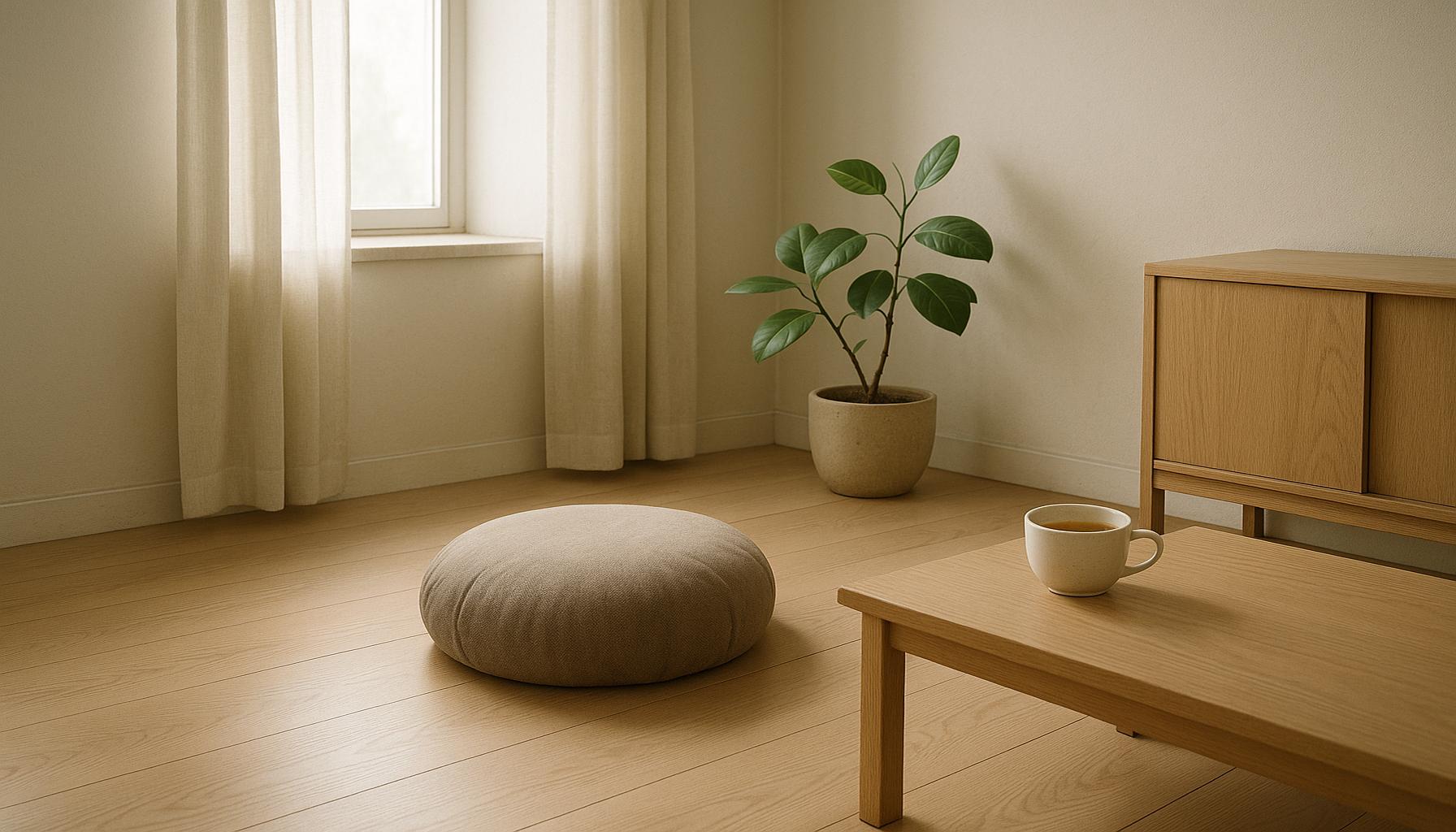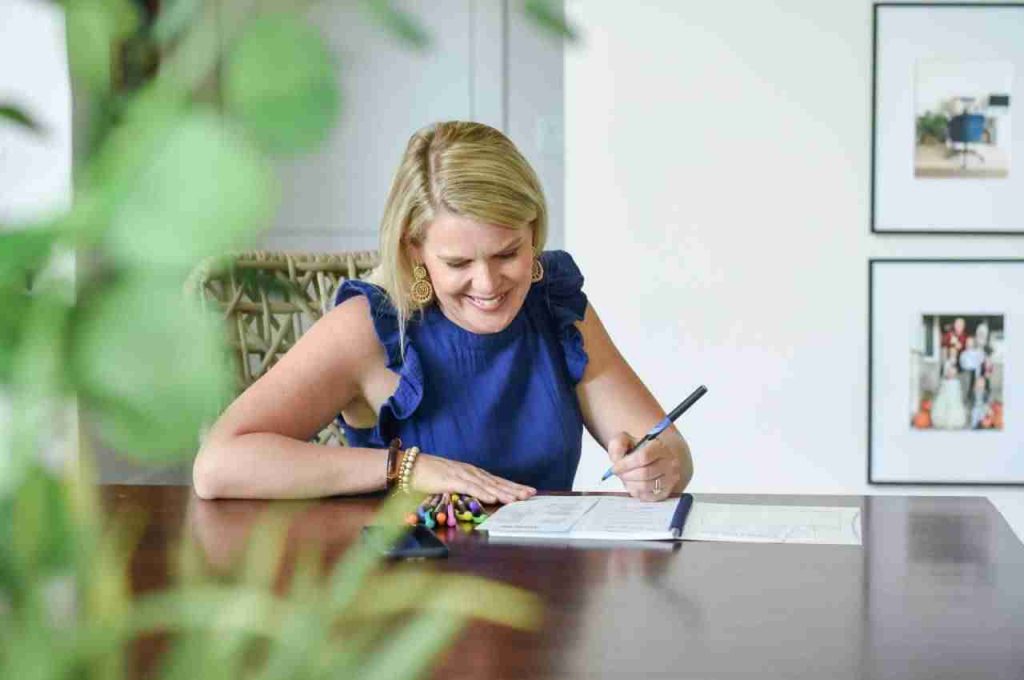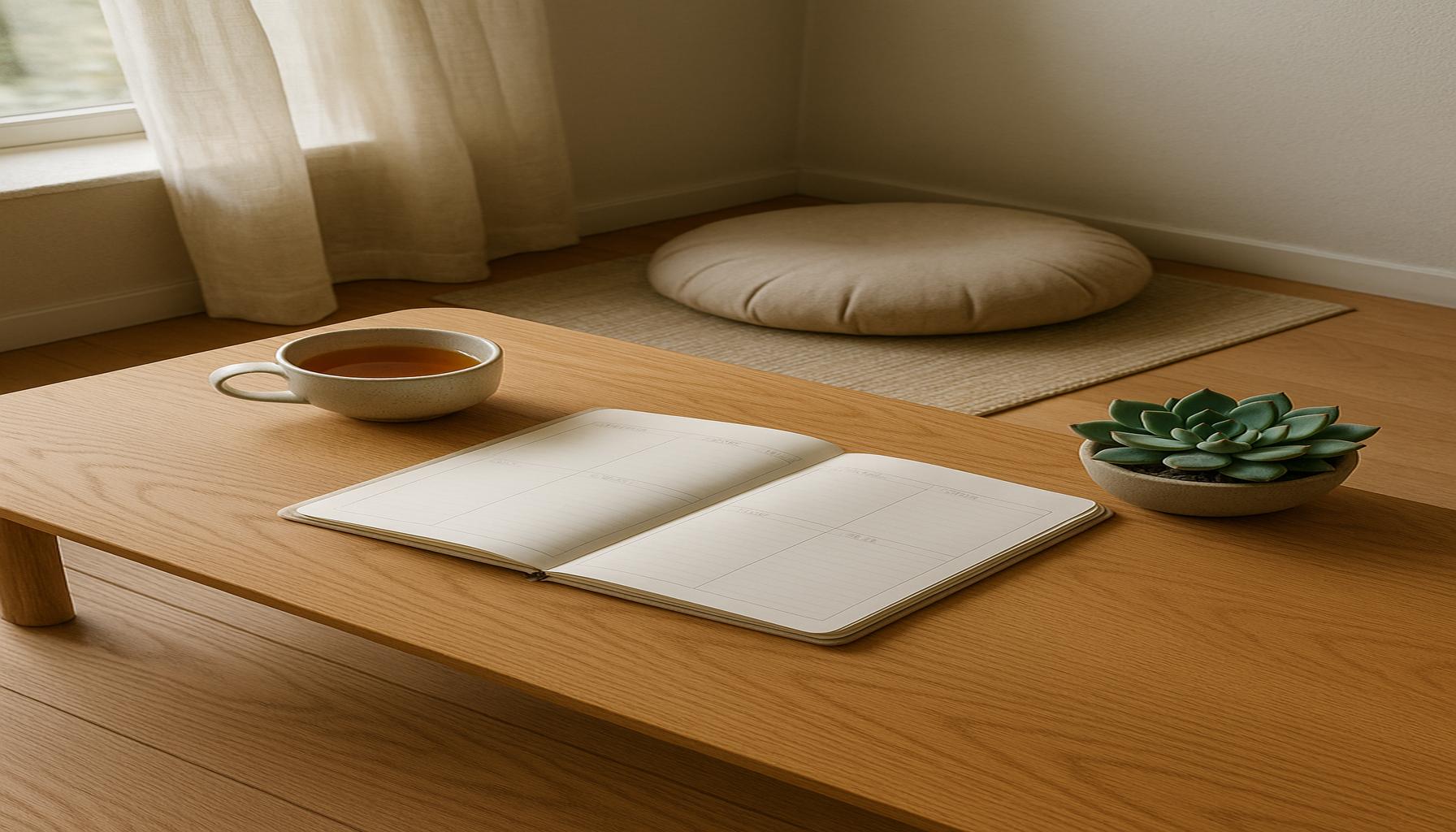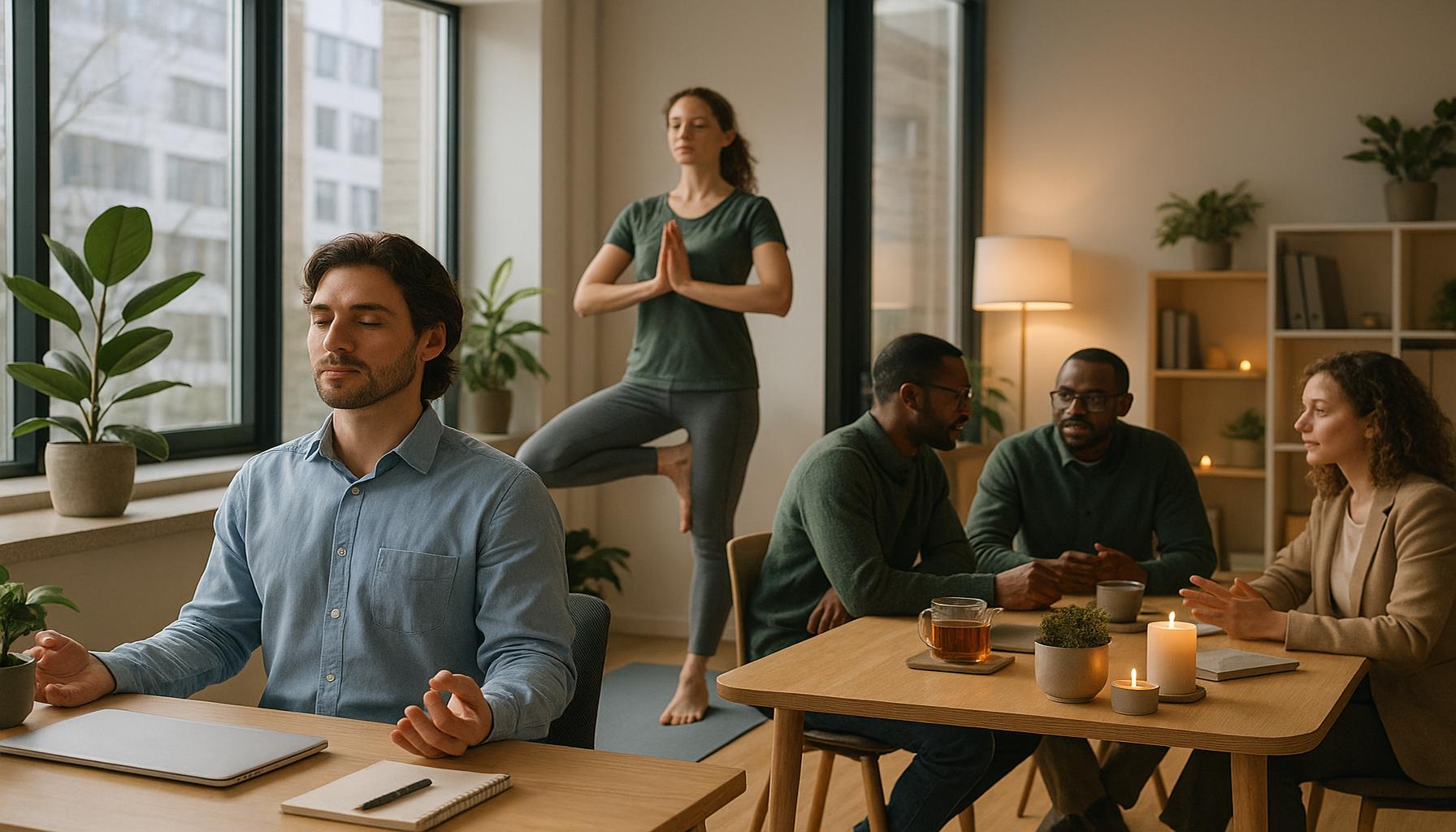Mindfulness as a Method to Assess and Reorganize Priorities in Minimalist Life

The Power of Mindfulness in a Distracted World
In our fast-paced society, where notifications and various obligations vie for our attention, cultivating mindfulness has emerged as an essential practice for many seeking clarity and purpose. Mindfulness encourages individuals to center themselves in the present moment, facilitating a deeper understanding of their thoughts and emotions. This practice not only aids in decluttering the mind but also promotes a sense of peace that is often elusive amidst daily chaos.
Enhanced Clarity through mindfulness serves as a beacon guiding individuals away from the fog of distractions. When one engages in mindful meditation or simply takes a moment to breathe deeply, distractions fade, allowing for self-reflection. For instance, someone may find that spending time mindfully in nature can illuminate what truly resonates with them—be it creativity, interpersonal connections, or self-care. This clarity equips individuals to identify what truly matters in their lives, enabling them to set defined priorities that resonate with their core values.
Improved Decision-Making is another significant advantage of mindfulness. By training the mind to focus, individuals often find themselves making choices that align more closely with their goals and ethics. For example, rather than impulsively purchasing a new gadget, a mindful individual might assess their real need for the item and the impact it would have on their financial and emotional health. This reflective approach leads to more thoughtful decisions, reducing buyer’s remorse and fostering a sense of satisfaction.
Moreover, the stress reduction that accompanies regular mindfulness practice cannot be overstated. The pressures of work, family life, and social commitments can be overwhelming. Through mindfulness techniques, such as deep breathing or guided imagery, individuals can significantly alleviate the symptoms of anxiety. Studies have shown that even short daily sessions of mindfulness practice can lead to improved mood and decreased stress levels, prompting a more peaceful state of mind that facilitates a minimalist lifestyle. Learning to say no and to prioritize tasks becomes easier and more intuitive.
As Americans increasingly embrace minimalism, it’s clear that this movement transcends merely living with fewer possessions. It emphasizes cherishing experiences and cultivating meaningful relationships. Mindfulness empowers us to rethink how we allocate our time and energy—fostering deeper connections with others and a more profound appreciation for life itself.

By integrating mindfulness into your daily routine, you open the door to re-evaluating commitments, promoting decisions that are true reflections of your values, and ultimately steering toward a life that embodies simplicity and fulfillment. Are you ready to harness the transformative potential of mindfulness? The journey awaits, and it starts with a single, mindful breath.
DISCOVER MORE: Click here to optimize your space
Harnessing Mindfulness for a Minimalist Mindset
The integration of mindfulness into everyday life not only cultivates a sense of peace but also serves as a potent tool for assessing and reorganizing priorities, particularly for those embarking on a minimalist lifestyle. As minimalism encourages a focus on what adds value to our lives, mindfulness offers the clarity to distinguish between what is essential and what is merely noise. But how does one practically merge these two methodologies?
First and foremost, a regular mindfulness practice sets the stage for effective prioritization. Individuals can begin by carving out time for short meditation sessions, where the primary goal is to quiet the mind and observe thoughts without judgment. This practice sharpens the ability to notice recurring themes or concerns. For instance, an individual may realize that their mind frequently drifts towards feelings of overwhelm regarding social commitments. Recognizing this pattern can lead to a decision to limit social engagements, prioritizing those that foster genuine connections.
Another crucial aspect is mindful reflection on personal values. Establishing a clear set of values acts as a compass, guiding decisions towards what truly matters. Individuals can ask themselves questions like:
- What experiences genuinely bring me joy?
- Which relationships nourish my spirit?
- What activities align with my core beliefs?
By engaging with these questions during mindfulness practices, individuals can formulate a more authentic understanding of their priorities. This can lead to a conscious effort to eliminate distractions and non-essential tasks that previously consumed time and energy without providing satisfaction.
Moreover, mindfulness encourages an examination of consumption habits. In a culture often fixated on excessive consumption, becoming mindful about what we acquire can shift perspectives dramatically. A minimalist approach promotes the idea that less can indeed be more, and embracing this notion often leads to significant lifestyle changes. For example, when we approach our material possessions with mindfulness, we may choose to keep only those items that hold genuine sentimental value or serve practical purposes. This practice leads not only to reduced clutter but also to a heightened appreciation for what remains.
Additionally, mindfulness fosters a sense of gratitude, enhancing our experiences of the present moment. In the context of minimalism, this gratitude reminds us of the importance of the experiences and relationships we cultivate rather than the things we own. Practicing gratitude helps in reorienting focus from materialistic aspirations to the richness of daily life.
Ultimately, the synergy between mindfulness and minimalism can pave the way for a more intentional life. By regularly employing mindfulness techniques, individuals can reassess their priorities, aligning them with their truest selves. The path toward a streamlined, more fulfilling life is not about deprivation but rather about making conscious choices that resonate deeply with personal values. In the upcoming sections, we will explore specific mindfulness practices that can facilitate this transformational journey.
| Advantage | Description |
|---|---|
| Enhanced Clarity | Mindfulness practices improve focus, allowing individuals to discern their true priorities in a minimalist lifestyle. |
| Reduced Stress | Applying mindfulness helps in managing stress by promoting a sense of calm, making it easier to embrace a minimalist philosophy. |
Exploring the intersection of mindfulness and minimalism reveals fascinating layers of personal growth. By actively engaging in mindfulness, individuals develop a refined perspective on what truly matters in life. For instance, a regular meditation practice can lead to greater self-awareness, enhancing the ability to assess one’s commitments and possessions critically.Moreover, employing mindfulness strategies allows individuals to let go of non-essential tasks and items, further aligning their lives with minimalism. Through techniques such as journaling thought patterns or practicing gratitude, a clear understanding of personal values emerges, guiding choices that reflect a simpler life. These principles highlight the profound impact of integrating mindfulness into daily routines, aligning psychological well-being with minimalist living. Techniques like mindful breathing can be particularly beneficial, as they serve as practical tools in recognizing the clutter—both mental and physical—that inhibits our ability to prioritize effectively. Engaging with this approach not only enlightens but also enhances one’s journey toward a more meaningful and simplified existence.
DIVE DEEPER: Click here to uncover more insights</p
Practical Mindfulness Techniques for Minimalist Living
To effectively use mindfulness as a means of reshaping priorities in a minimalist lifestyle, individuals can adopt several practical techniques designed to both enhance their awareness and simplify their lives. Each method serves to deepen one’s appreciation for what truly matters, while simultaneously allowing for a clearer understanding of personal goals.
One powerful approach is the practice of mindful organization. This involves being fully present and aware while decluttering physical spaces. Instead of mindlessly tossing items into boxes, individuals can engage in a more conscientious process. This could mean evaluating each item based on its utility or sentimental value. For example, while organizing a closet, one might ask, “Does this shirt enhance my sense of self or bring joy?” This focused evaluation fosters not only a tidier environment but encourages critical reflection on how physical possessions influence emotional and mental well-being.
Moreover, incorporating mindful journaling can significantly aid in assessing priorities. Setting aside a few moments each day to jot down thoughts can help individuals process their experiences and gain insight into their desires and goals. Journaling prompts like “What made me feel fulfilled today?” or “What decisions drained my energy?” encourage reflection on the day-to-day activities that align with one’s values. Over time, recurring themes may surface, guiding individuals toward the recognition of priorities they may not have consciously considered.
Engagement in mindful consumption is another essential element. Mindfulness extends beyond simply decluttering; it also includes a conscious approach to future acquisitions. Before making a purchase, individuals can adopt a ‘pause and reflect’ strategy, asking questions such as “Do I truly need it?” or “How does this align with my minimalism goals?” This practice diminishes impulse buys and promotes thoughtful consumption, ensuring that each new item enhances rather than detracts from personal peace.
Additionally, mindfulness walks provide an excellent opportunity to weave physical activity into introspective thought. During these walks, focusing on the sensations of movement—the crunch of leaves underfoot or the feel of the breeze—can ground the mind, allowing individuals to process their thoughts about priorities without distractions. Incorporating a nature element fosters a connection with the world around, which can instill a renewed perspective on essentials in life.
To further blend mindfulness with minimalism, individuals can engage in digital decluttering. In an era where technology often adds layers of distraction and overwhelm, taking time to limit screen time by unfollowing social media accounts that don’t serve meaningful purposes or unsubscribing from email lists can significantly reduce mental clutter. Mindful awareness about digital consumption helps in creating a more peaceful online environment, which is essential for maintaining focus on what truly matters.
As individuals explore these practical techniques, they will likely find that the interplay between mindfulness and minimalism creates deeper awareness and appreciation for what adds value to their lives. By prioritizing what resonates most, they can shift towards a lifestyle that feels not only lighter but more aligned with their true selves.
DIVE DEEPER: Click here to learn more
Finding Balance through Mindfulness and Minimalism
In conclusion, mindfulness serves as a transformative tool for those seeking to assess and reorganize their priorities within a minimalist life. By embracing techniques such as *mindful organization*, *journaling*, and *digital decluttering*, individuals can cultivate a deeper awareness of their values and aspirations. This heightened consciousness not only aids in removing physical and mental clutter but also helps to illuminate what is truly essential in one’s life.
As the journey towards minimalism unfolds, it becomes clear that the practice of mindfulness encourages a thoughtful relationship with both possessions and experiences. By evaluating every aspect of life through a lens of intentionality, individuals can unlock a profound sense of purpose and alignment with their true selves. The questions posed during mindful reflection push one to challenge the status quo and redefine what brings joy and fulfillment. Thus, the synergy between mindfulness and minimalism empowers individuals to make informed choices, leading to not only a simplified lifestyle but also enhanced overall well-being.
In an age dominated by distractions and consumerism, embracing this mindful minimalist approach offers a pathway to find peace amid chaos. For those eager to explore this life-changing journey further, consider integrating mindfulness practices into daily routines. The rewards? A clearer mind, a lighter physical space, and a life that resonates deeply with authenticity and clarity.


